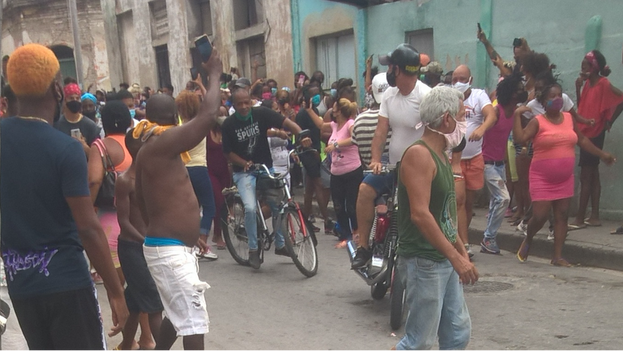
![]() 14ymedio, Alberto Hernández, Santiago de Cuba, 12 July 2021 — Like many other cities on the island, Santiago de Cuba shook this Sunday with a massive march. The cries of “Cuba libre,” “Patria y vida,” “Díaz-Canel singao [motherfucker]“ and “Liars” resounded, among many other slogans, through the most important streets of the city.
14ymedio, Alberto Hernández, Santiago de Cuba, 12 July 2021 — Like many other cities on the island, Santiago de Cuba shook this Sunday with a massive march. The cries of “Cuba libre,” “Patria y vida,” “Díaz-Canel singao [motherfucker]“ and “Liars” resounded, among many other slogans, through the most important streets of the city.
“In my 53 years I have never seen anything like it in Santiago, this is the beginning of the end of the tyranny in Cuba,” says Roberto, one of the hundreds of protesters who were there. “I listened to the call of my compatriots and I quickly joined the crowd that was organized on Martí y Calvario Avenue.”
The number of people multiplied immediately.
“Let’s go to the Party, patria y vida, summon the people, do not be afraid, we are the majority!” Maikel, a young activist on his motorcycle, shouted at the top of his voice.
The wave of protesters from Santiago was made up of mostly men, but also women and teenagers, many barefoot due to the shortage of flip-flops, and not only people on foot, but also motorcyclists and bicycle riders. “When no one else could enter Marti Avenue, we began to go up towards the Provincial Party,” says Roberto.
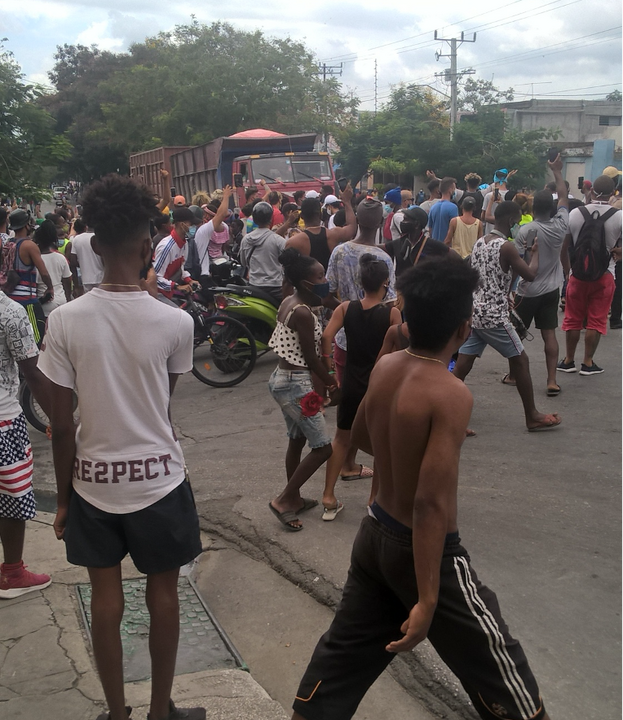

At the top of the hill, the drivers revved their engines, depressing the accelerators of their parked vehicles, forming a cloud of smoke as they invited more people to join.
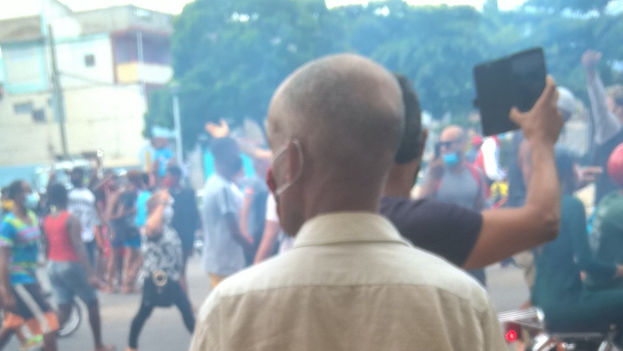
One of the protesters, Antonio, loudly explained the reason for the peaceful march: “We are demonstrating because we are tired of lies, hunger, slavery, manipulation. This is patria y vida.’ Homeland because we want a new homeland for all Cubans, and not for a group of vivebién* who are the ones who now dominate Cuba as they please. Life because they are killing us little by little, and we need new life. ”
The protesters continued their course down Central Avenue. There the Police arrived in a patrol car, but had to withdraw before the advance of the crowd. To the left was the historic July 26 barracks as a witness to a new rebellion forming before their eyes.
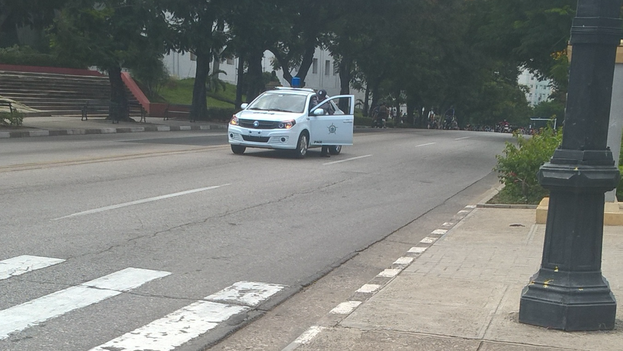
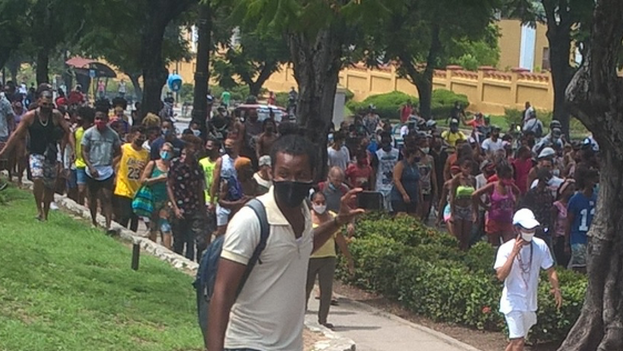
Upon reaching the intersection of Avenida Central and Avenida Garzón, a cordon of police officers prevented the crowd from reaching the Party’s provincial headquarters, when they were about 30 yards from their destination. “In front of the police and those of the Government, who saw us head on, we began to chant slogans while the police cordon gathered, stopping the advance of the group,” says Roberto. Finally, the group turned around and went back along Avenida Central, while another group made a detour to Avenida 24 de Febrero, also called Trocha.
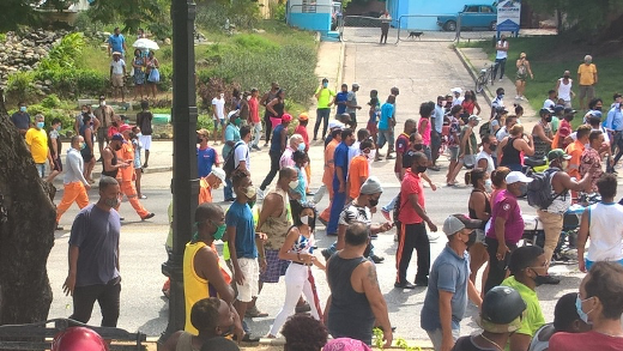
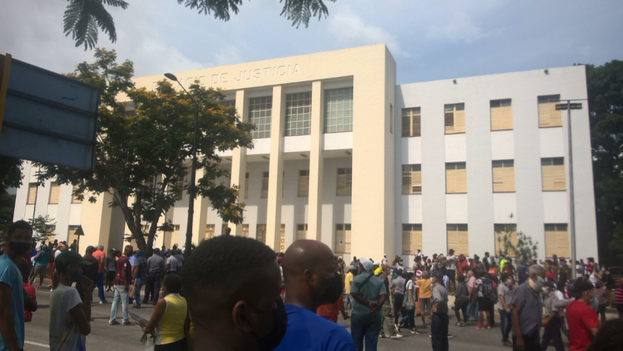
When the main group returned again to Central and Garzón, a small bus arrived full of authorities and government personnel, including the mayor of Santiago de Cuba, Elio Rodríguez.
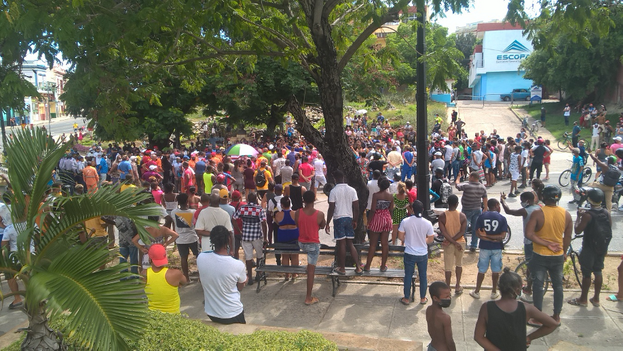
At the same time, almost as if it were a racing car at full speed, a bus arrived full of people who looked like workers. However, the support personnel sent by the authorities were hiding under the false workers’ garb.
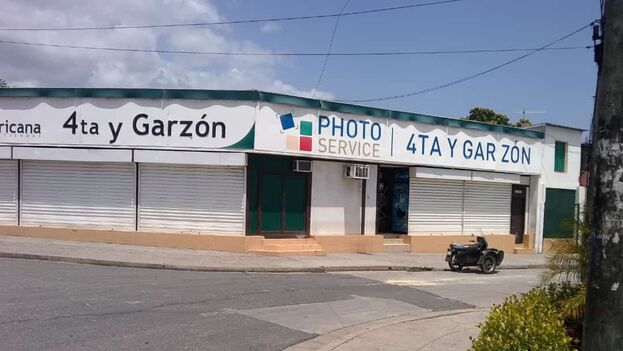
“The last place where the group of protesters gathered was on the sidewalk in front of the Santiago de Cuba Palace of Justice,” continues Roberto, another “historic building” that evoked freedom in Cuba.
“From there one of the most emotional moments of the entire march happened: the notes of our Bayamo [national] anthem were sung with force,” he narrates.
After the first arrests, they cut off the internet. “I looked like a reporter,” says Ernesto, another young protester with a modern telephone in his hands. “Through my Facebook account, I sent a number of photos to my online wall and I was recording the video of the demonstration standing in the Coppelia parking lot, when communication was cut off.”
Marcos, another spontaneous reporter, claims to have broadcast what happened to his family in Chile live via WhatsApp.
The authorities then set up a car with loudspeakers and brought in more civilian-clad personnel. On one side of the Palace of Justice, a truck full of youths dressed in green police uniforms disembarked, surrounding the protesters, who backed away slowly.
“Look at that, they came with sticks and a lot of people,” says Marcos, another young man present. “What is that called, let’s see? Repression, my brother, this is repression.”
The group that went to Trocha had a worse time. “I saw how two policemen were holding a protester by the hands and feet and threw him into a patrol car,” says Pedro, a motorcyclist who was passing by and who also witnessed “a lot of blows” to several protesters.
On the other hand, the 4th and Garzón store, which requires payment in freely convertible currency, had to be protected with its metal shutters after being stoned by the crowd. Since the Government put basic items up for sale in foreign currency last year, these businesses have been harshly criticized by the population, who for the most part do not have access to dollars.
*Translator’s note: Vive bien translates as ‘live well.’ El Vive Bien is the title of a song by Alberto Zayas, a Cuban singer and songwriter. The lyrics are in the voice of a man talking about how he will marry a woman who will work and give him all her money, and “we will live happily, but I without doing anything.”
____________
COLLABORATE WITH OUR WORK: The 14ymedio team is committed to practicing serious journalism that reflects Cuba’s reality in all its depth. Thank you for joining us on this long journey. We invite you to continue supporting us by becoming a member of 14ymedio now. Together we can continue transforming journalism in Cuba.
